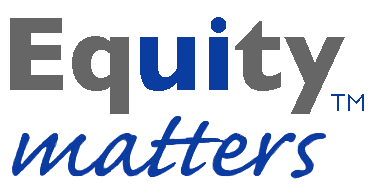Imagination Is a Strategy: What if we led with vision, not fear?
White text on a blue background reads, IMAGINATION IS A STRATEGY: WHAT IF WE LED WITH VISION, NOT FEAR? Next to the text is a large white question mark.
Our blog is a space to explore the hard questions that move organizations toward real change. Grounded in the belief that racial equity must live in both culture and daily practice, we share stories, tools, and reflections that help bridge values with action. From internal leadership shifts to community-rooted strategies, we highlight the everyday work of building racial equity, one decision, one relationship, one breakthrough at a time.
May's blogging prompt comes courtesy of Heidi.
In a moment when political chaos and racial justice backlash are designed to keep us in fear and fragmentation, radical imagination is not a distraction—it’s a strategy. As anti-Blackness, xenophobia, and white nationalist policies resurface through executive orders and culture wars, we ask: What if our organizations chose vision over reaction? What if racial justice weren’t just a value we name, but a future we boldly design with care, courage, and creativity?
Inspired by Octavia Butler’s reminder that “the only lasting truth is change,” we are called to shape that change, not merely endure it. Her legacy teaches us that radical imagination, especially in times of backlash, is essential for building multiracial, liberated futures. This blog post offers prompts to help spark that collective “what if” energy—and move it into action.
Heidi’s prompts are focused on CULTURE WORK!
Black background with white text that reads: What if our organization invested in artists as much as policy analysts? How would centering cultural workers shift how we imagine, communicate, and move people?
Black background with white text that reads: What if we measured narrative change like we measure outcomes? What new indicators could we track—imagination sparked, dominant frames challenged, new futures made visible?
Black background with white text that reads: What if we used beauty, joy, and imagination to disarm white supremacy? What would our work look like if we led with emotion and art—not just urgency and data?
CiKeithia’s prompts are focused on BASIC NEEDS!
Pink background with white text that reads: What if our response to the current political, economic, and cultural climate focused more intentionally on reaching BIPOC communities? How might we use the results of our organizational relationship mapping to identify unreached BIPOC communities most impacted?
Pink background with white text that reads: What if we stopped using polite language to describe deep, unmet needs in our communities? How can we take a more systemic approach to collecting and sharing stories of community need? Unmet needs are not individual failures—they are collective failures of systems, institutions, and people to ensure safety and well-being for all.
Pink background with white text that reads: What if our organizational default shifted from a deficit mindset to one rooted in collective wisdom and community abundance? What new frameworks could help us analyze our internal processes and practices? Where are the opportunities to shift both the narrative and the power?
LaToya’s prompts are focused on STABLE HOUSING!
Blue background with white text that reads: What if housing policy was shaped by those most impacted, not just those in power? How might we shift decision-making to prioritize Black, Indigenous, and other communities of color who have long faced housing injustice?
Blue background with white text that reads: What if the stories we told about housing reflected resilience, not deficit? How might we use community storytelling to challenge harmful narratives, reshape public will, and demand housing justice?
Blue background with white text that reads: What if our housing systems were built to repair harm, not perpetuate it? How might we transform housing institutions by centering the leadership, knowledge, and power of historically excluded communities?
Chalon is on family leave this month!
Want a PDF of the ‘What If’ prompts or curious about how Equity Matters can support your team’s imagination work as part of your racial equity strategy? Reach out to Heidi!










